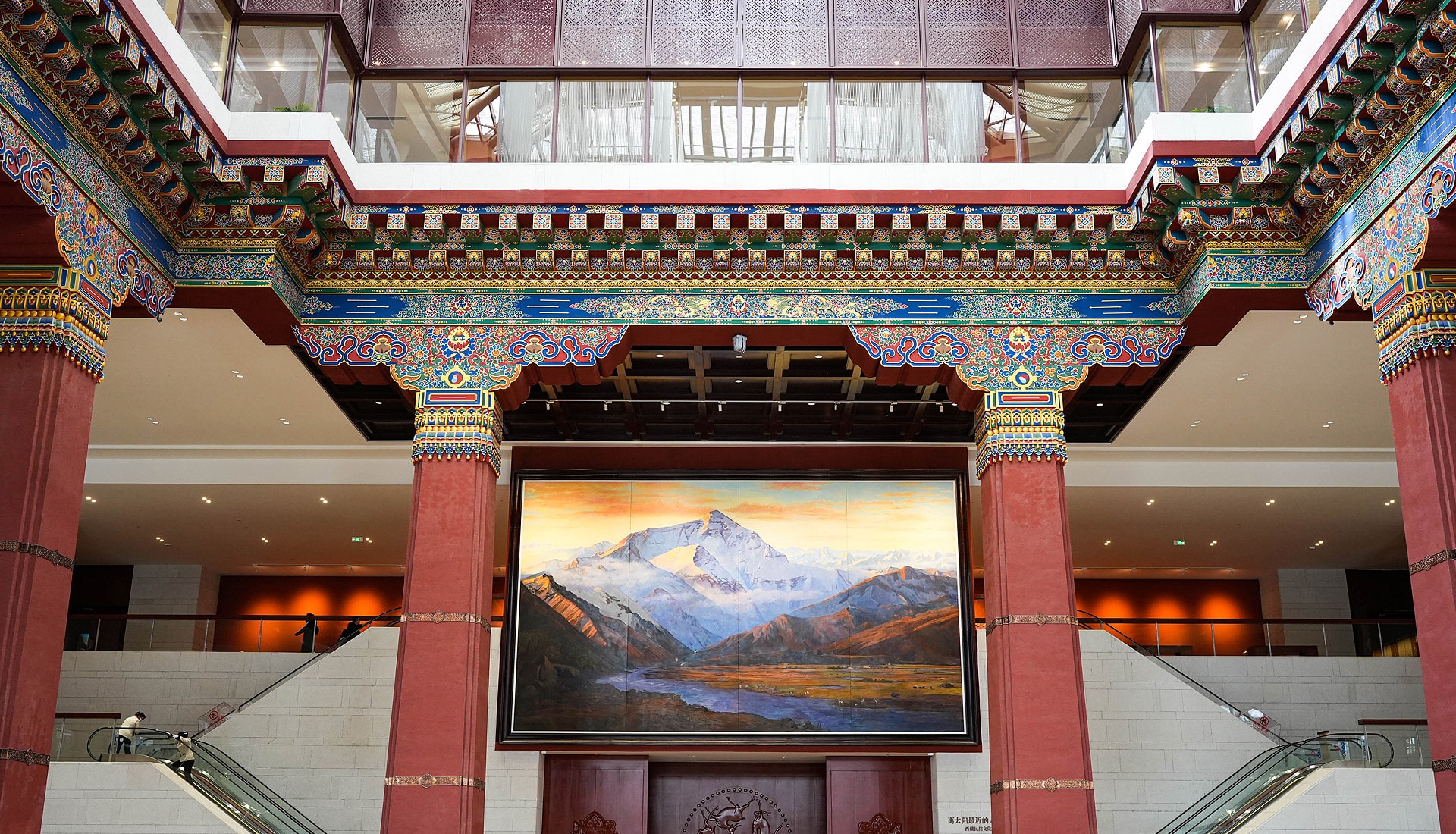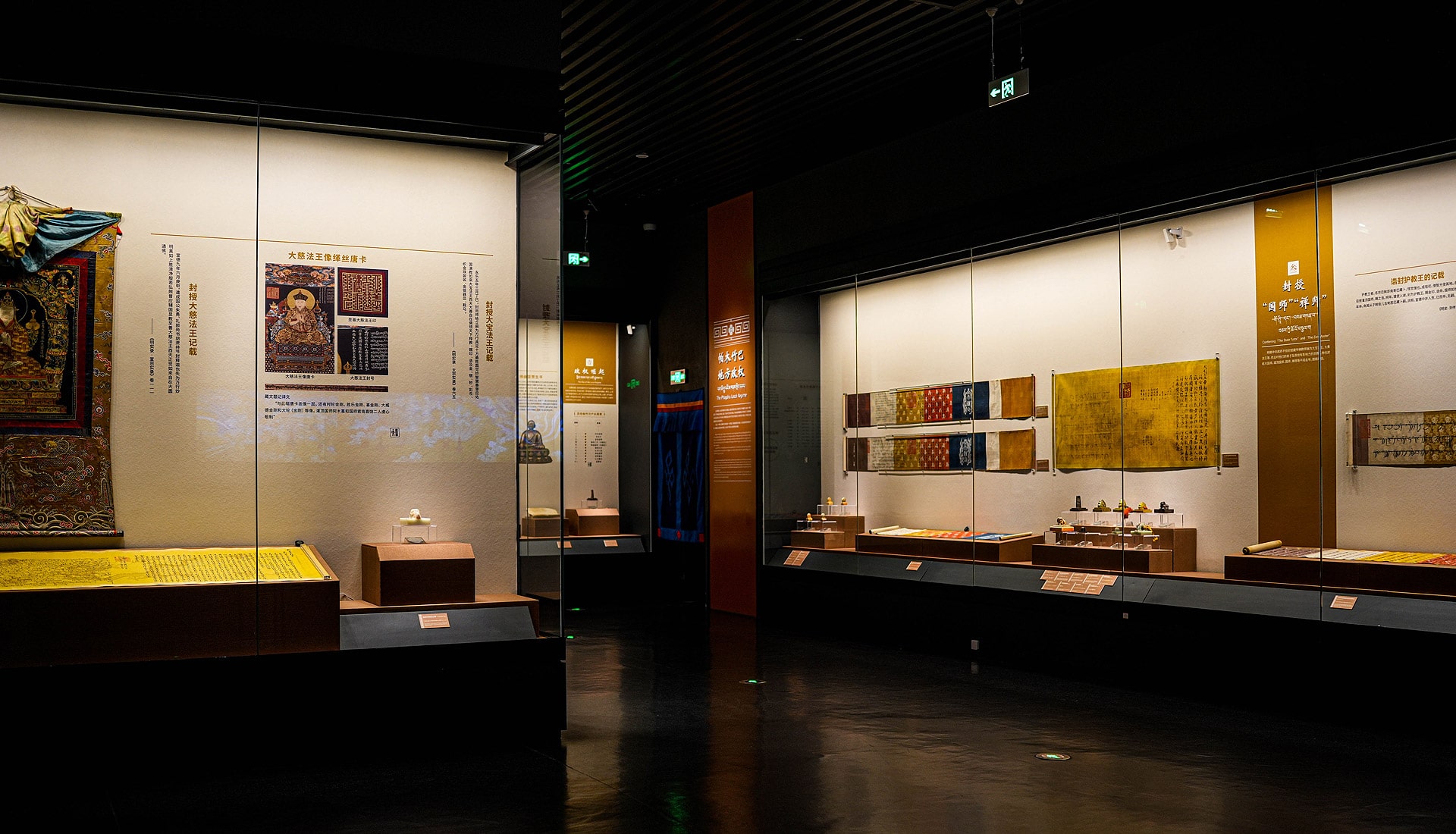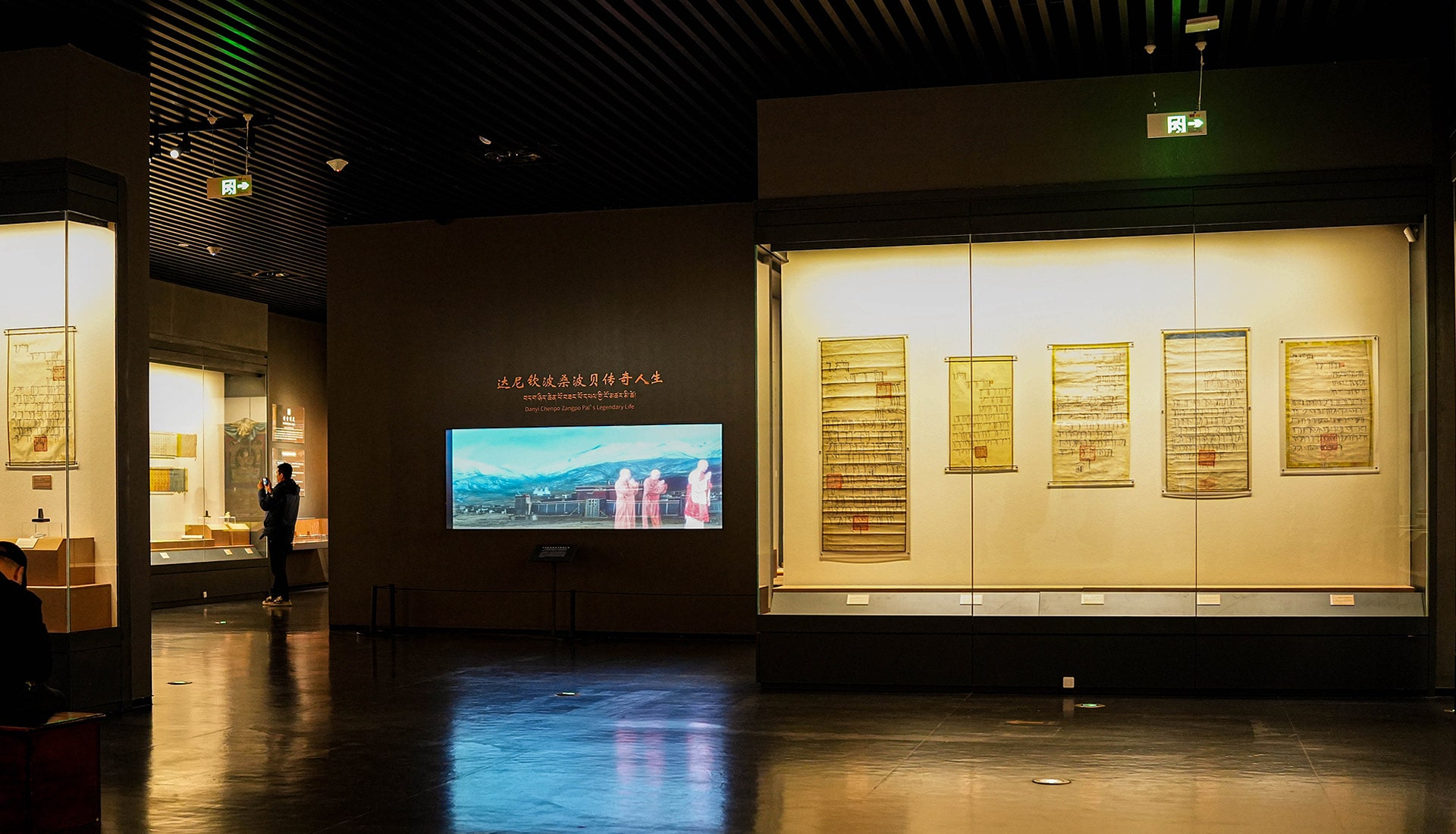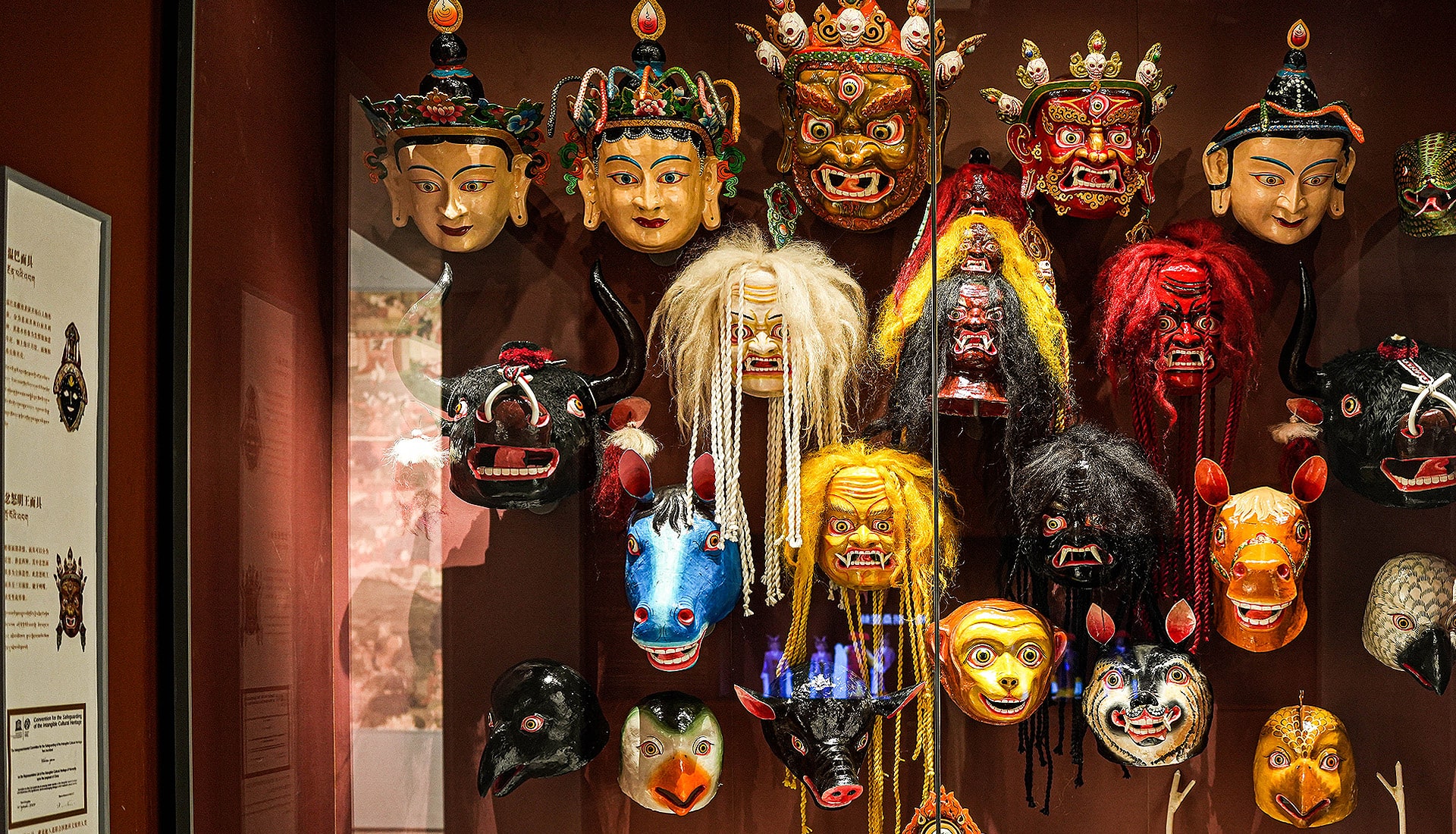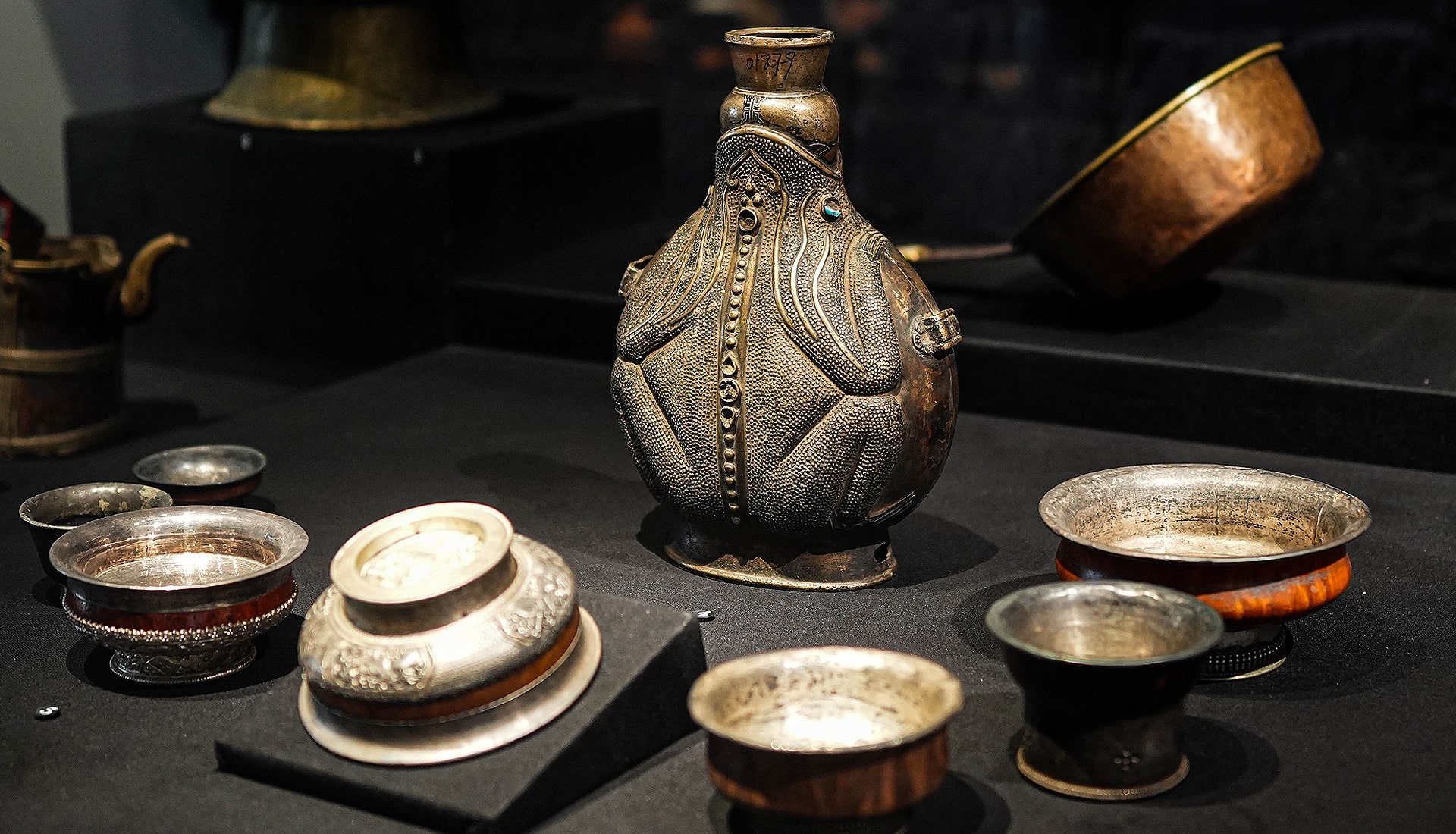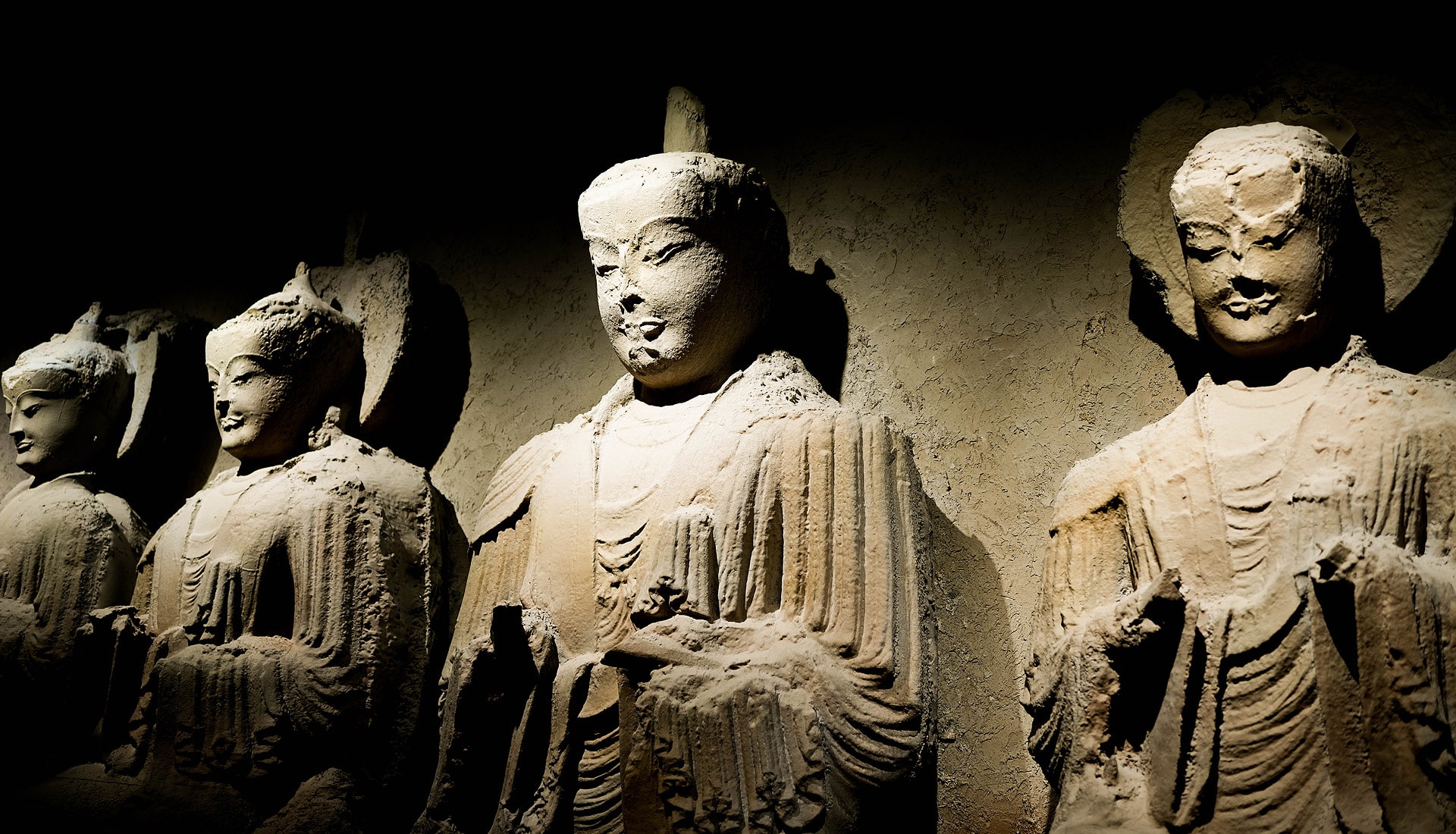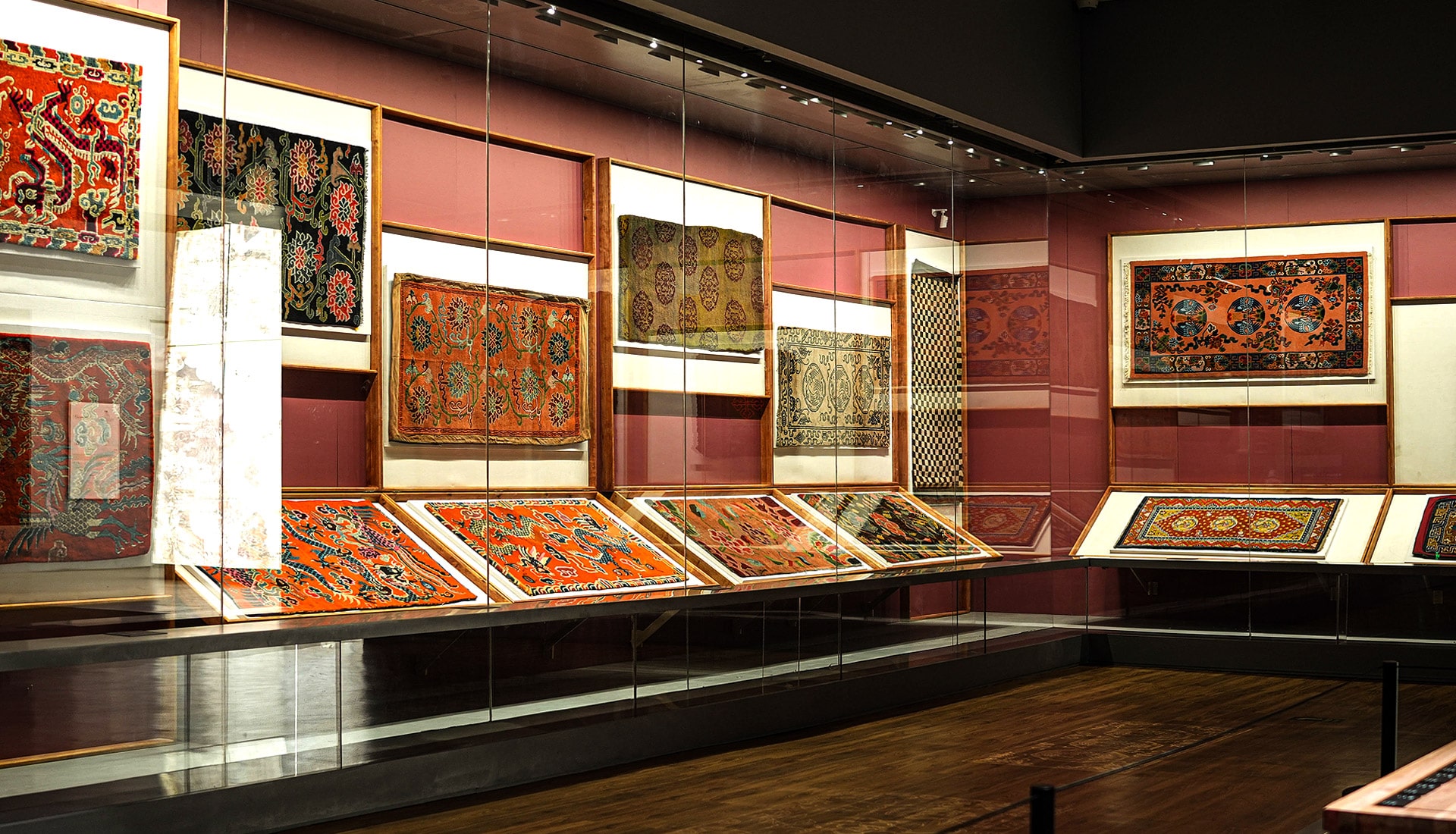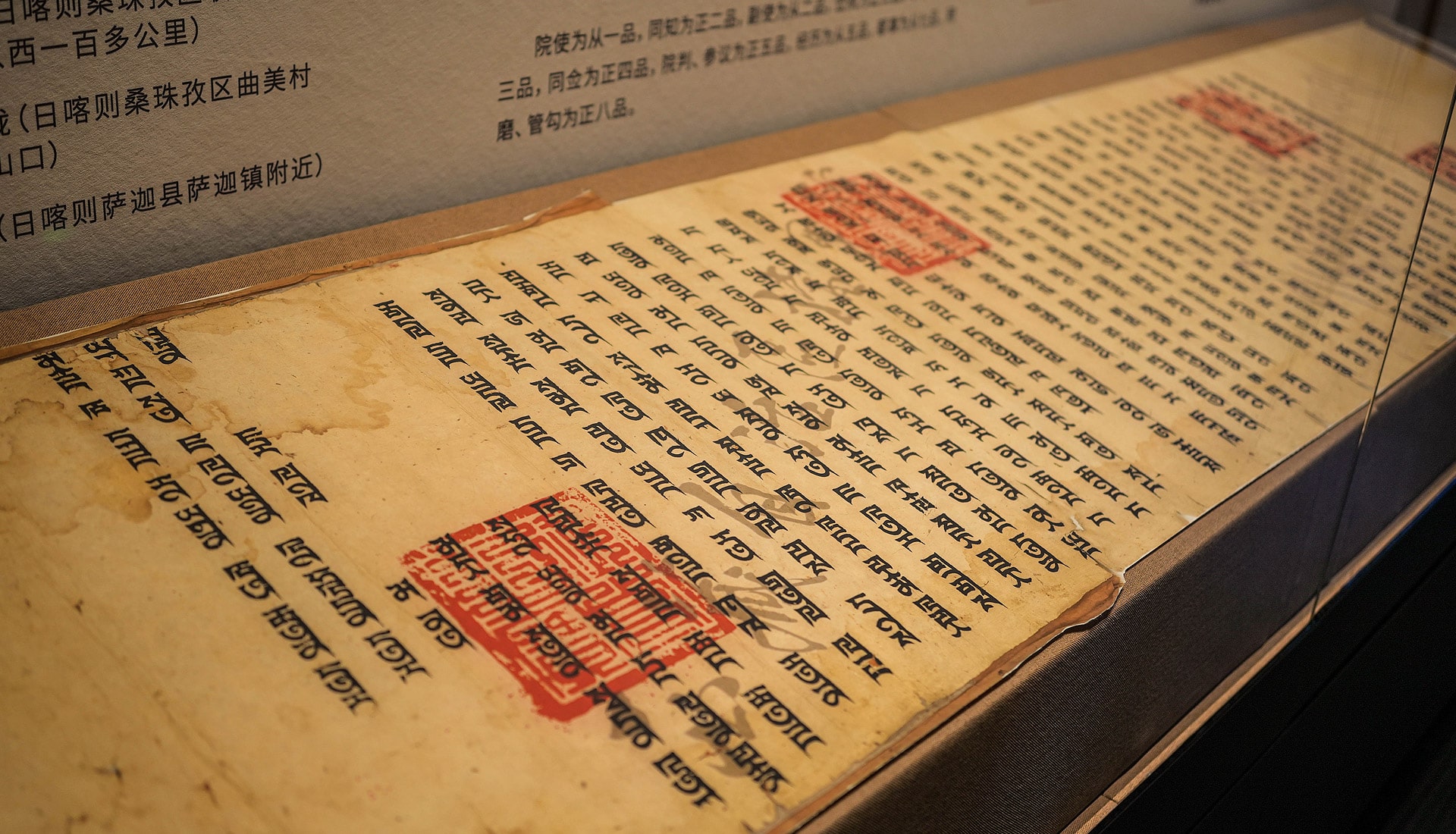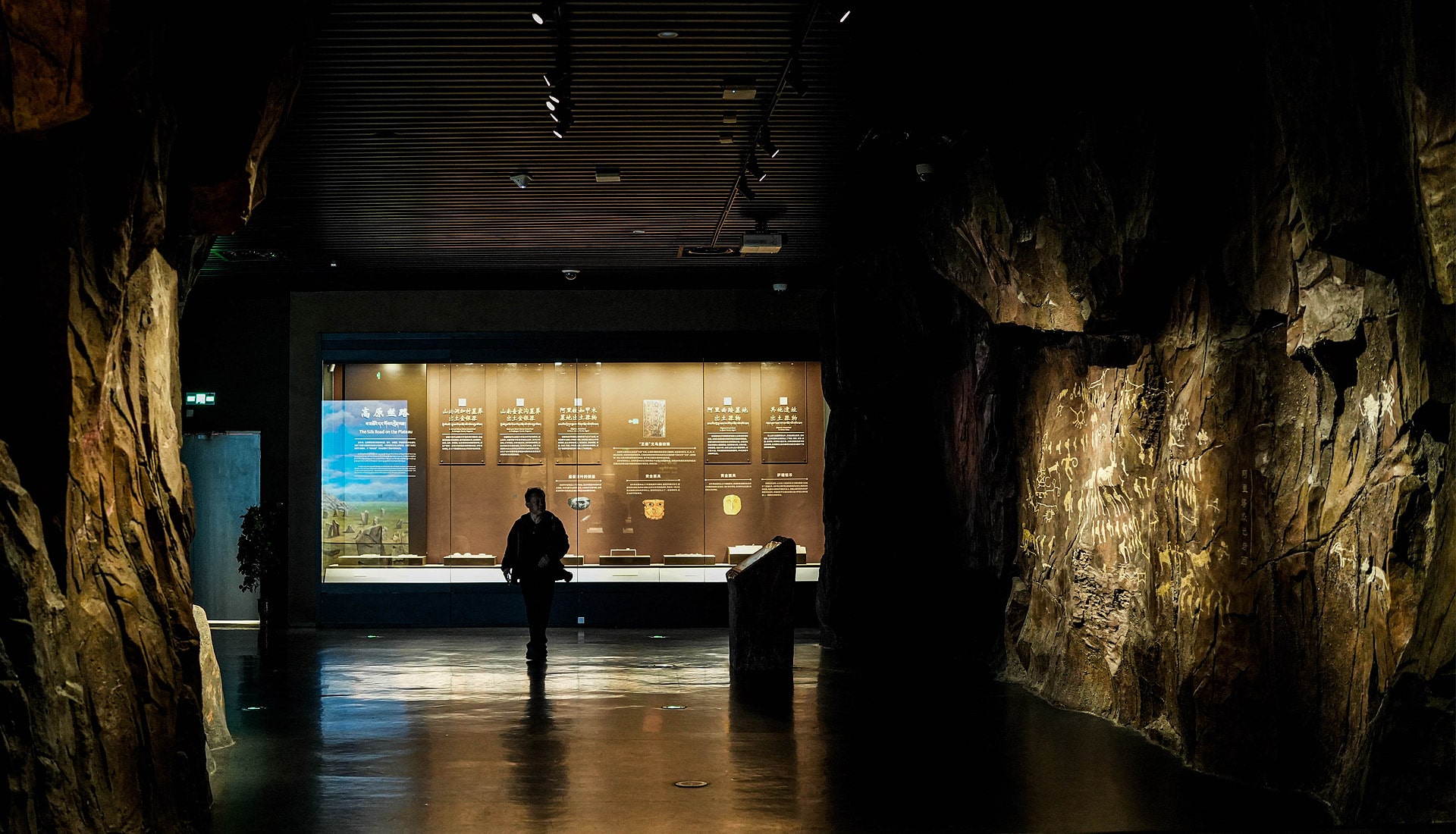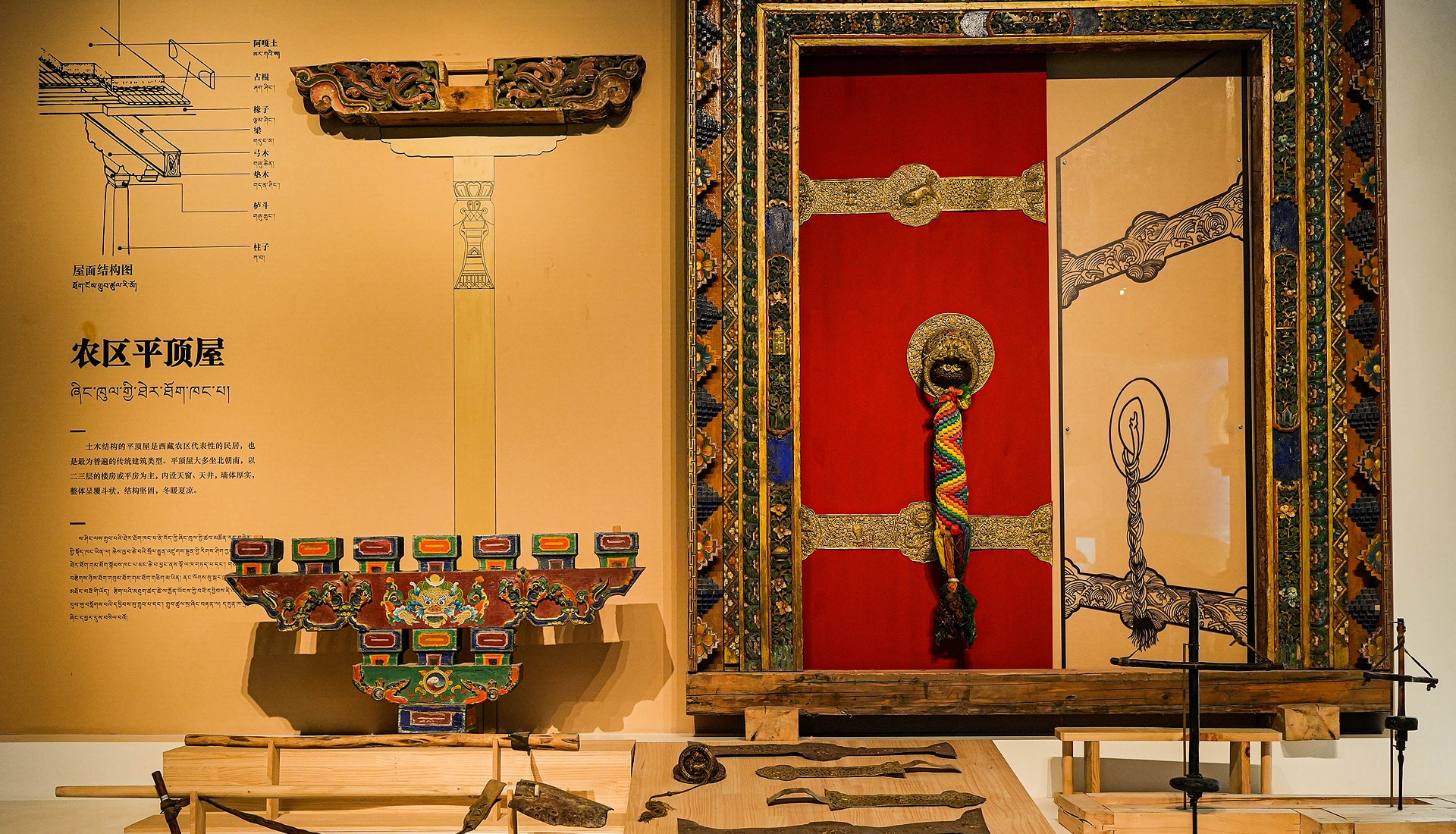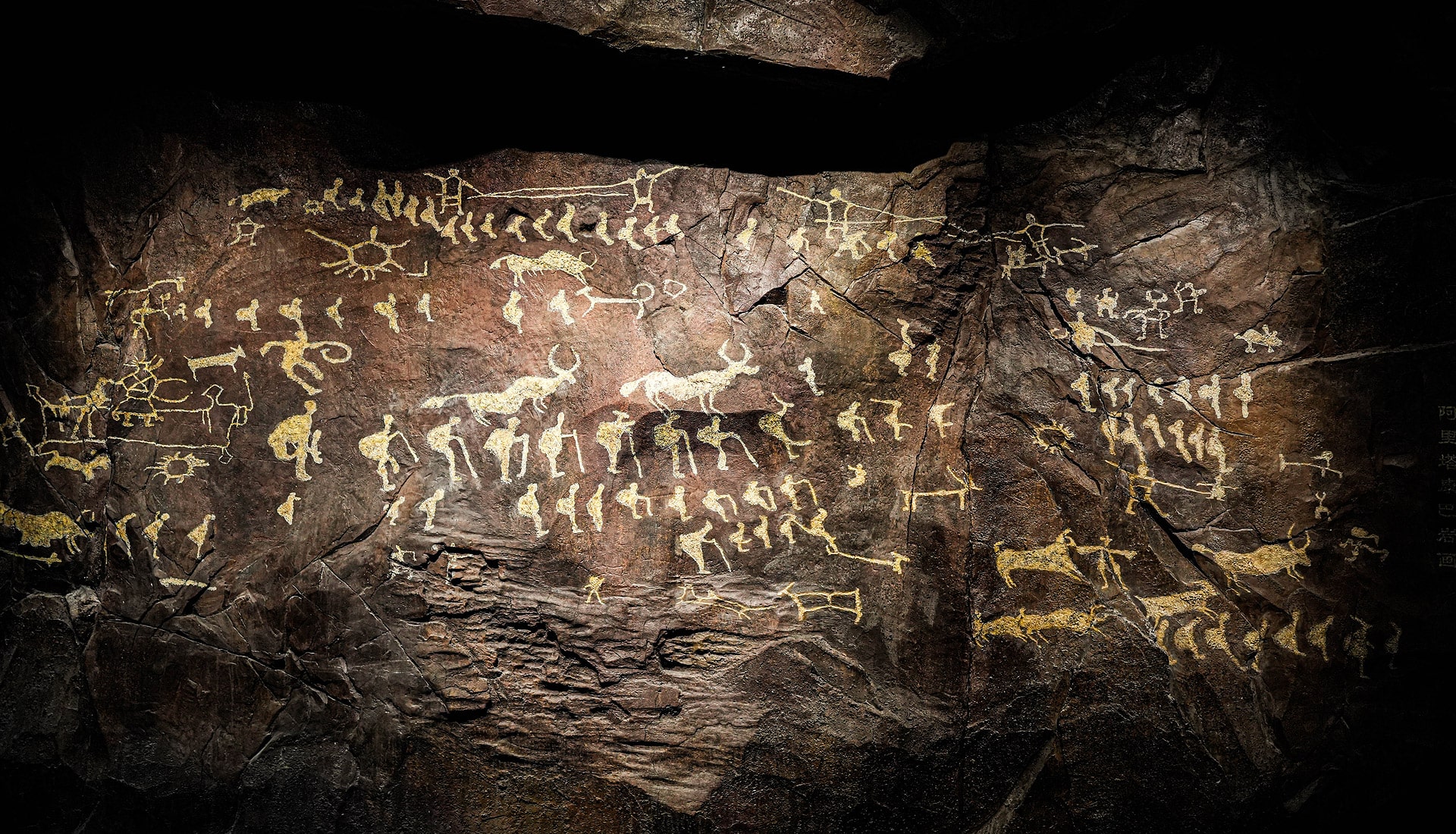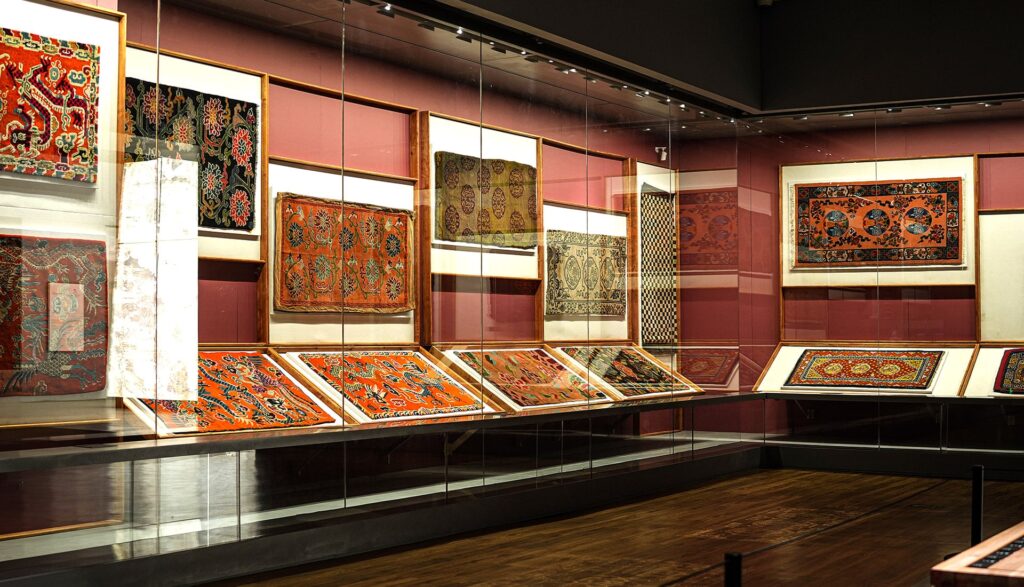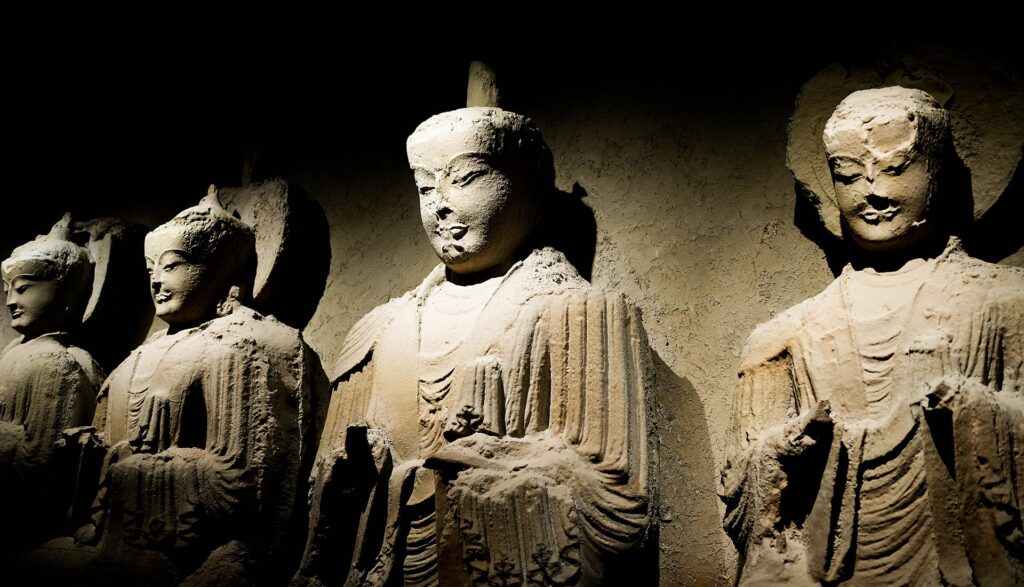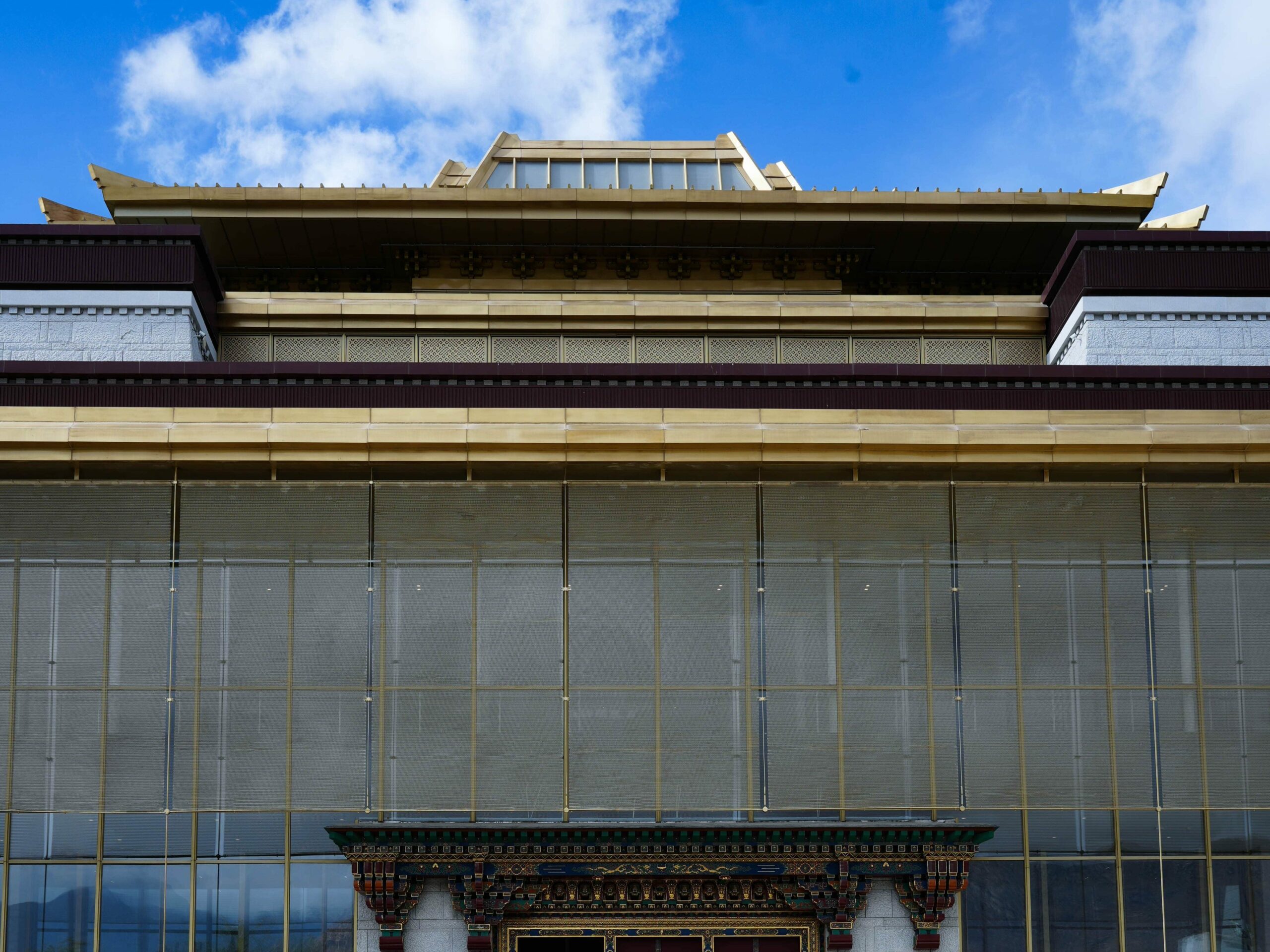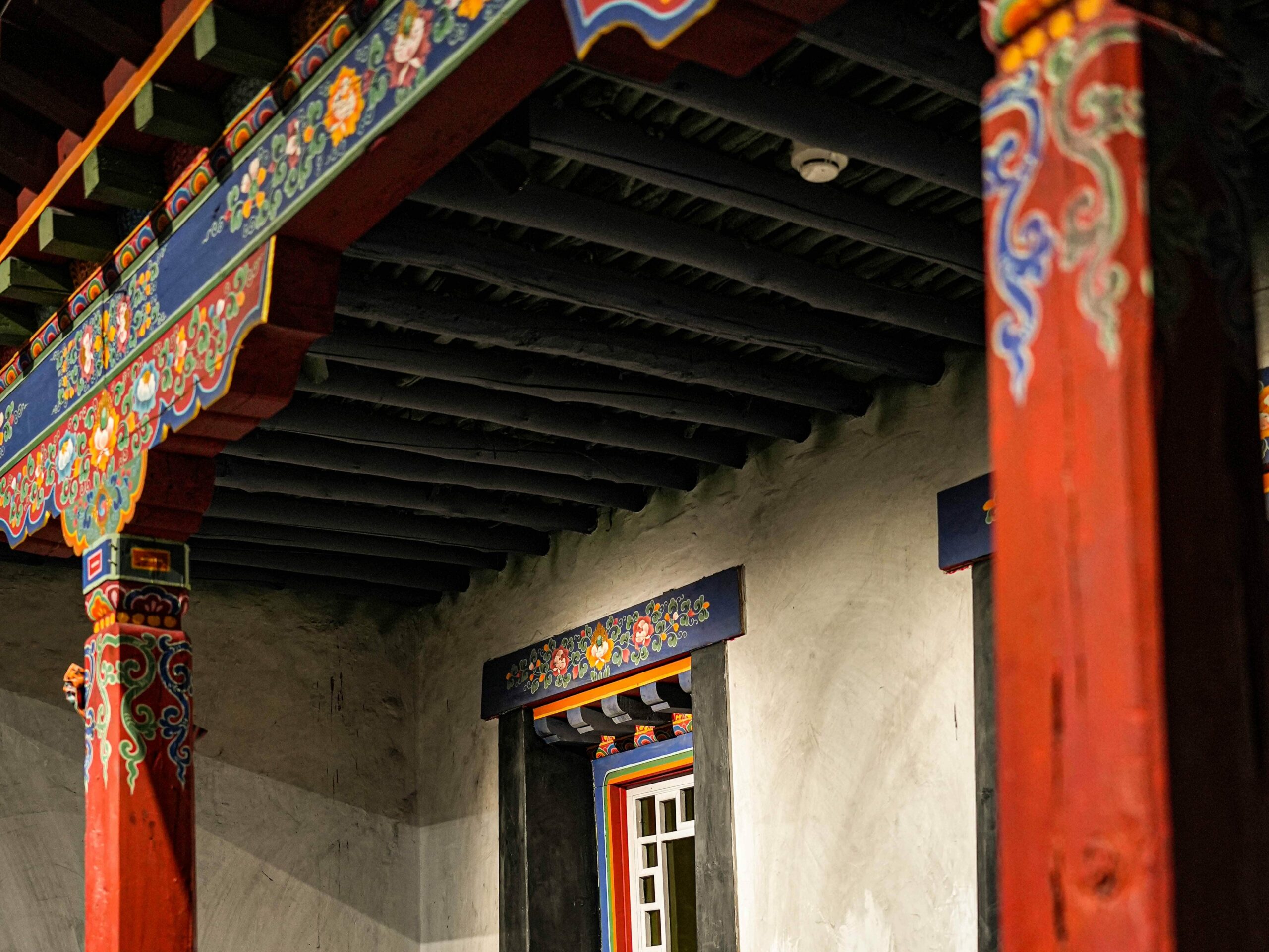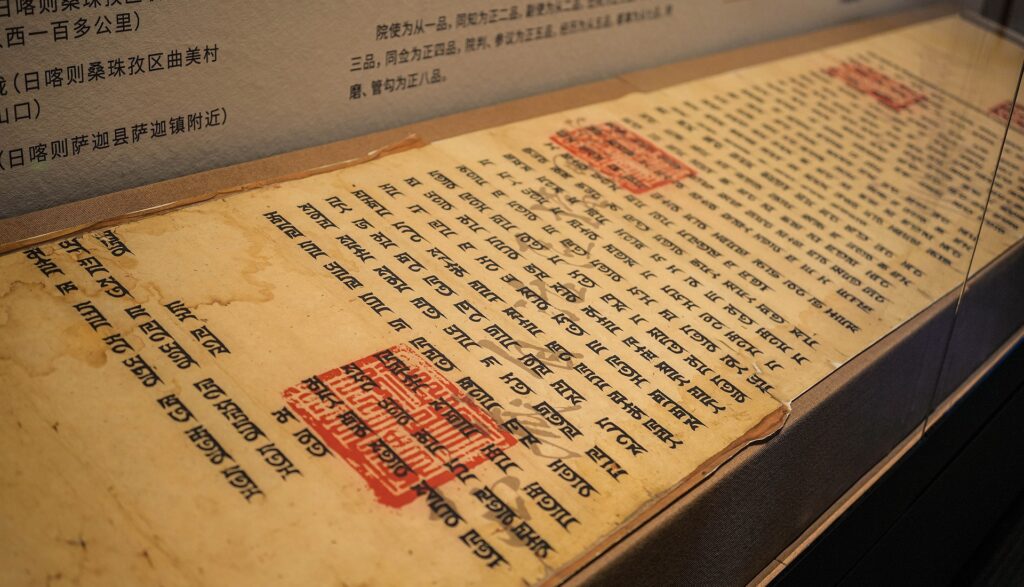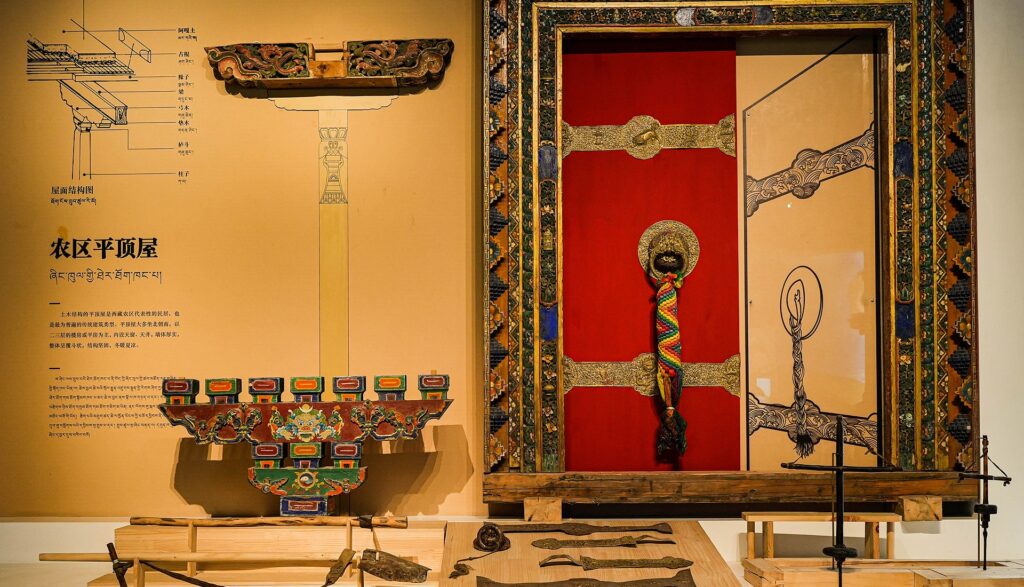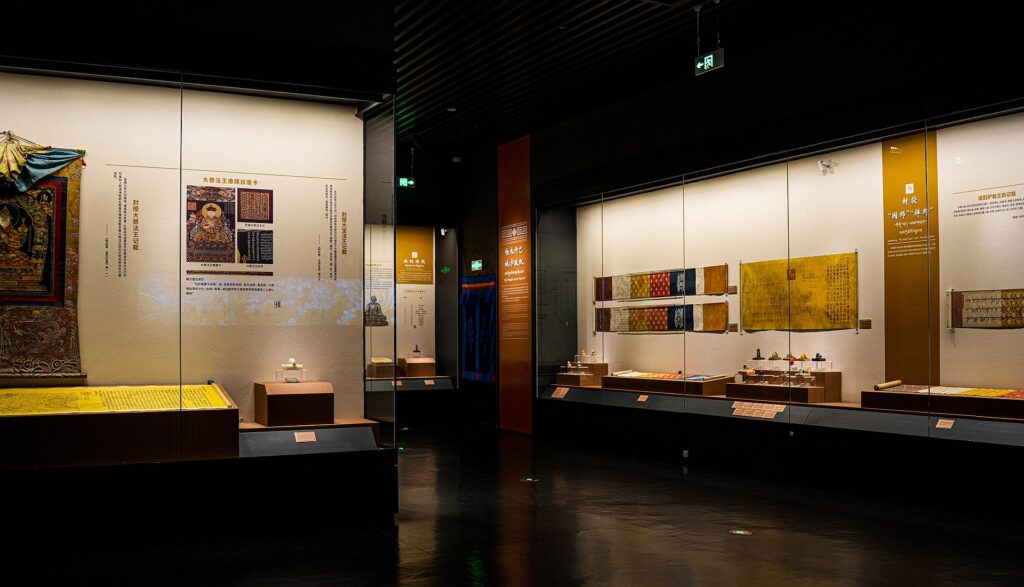Exquisite Collections
The Tibet Museum boasts a rich and diverse collection spanning from prehistoric times to the modern era, vividly showcasing Tibet’s unique landscapes, historical heritage, religious beliefs, and folk traditions. Among the highlights are ten national treasures that captivate visitors, including a Double-Spouted Pot, a Blue-and-White He He Vase with Lotus and Eight Auspicious Symbols, the Sanskrit Palm-Leaf Manuscript Ashtasahasrika Prajnaparamita, the Panorama of Emperor Ming Taizu’s Universal Salvation, a Gilded Bronze Acarya Trailokyavijaya Buddha, a Golden Benba Bottle, Qing Dynasty Coral Beads, the Thangka Portrait of Phagspa, a Jade Teapot, and an Imperial Gold Seal. Each piece is a remarkable witness to history and a profound expression of Tibetan culture.
In addition, the museum features several thematic exhibition halls, including the “Hymn of the Snowy Plateau” gallery, which houses over 2,000 artifacts. The exhibits are divided into five chronological sections: Prehistoric, Tang-Song, Yuan-Ming, Qing and Republican Era, and Post-1949 New China. Through multiple perspectives—culture, religion, history, and art—the gallery vividly illustrates the evolution of Tibetan civilization and its deep-rooted connection with Chinese civilization.

